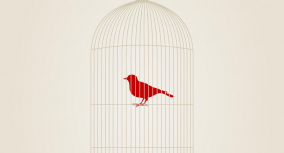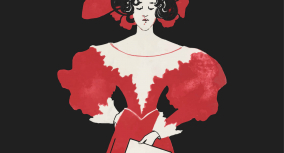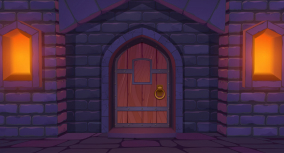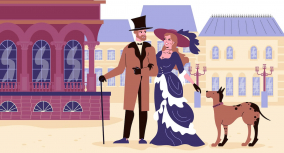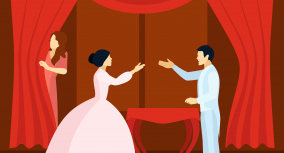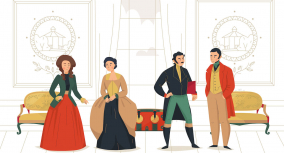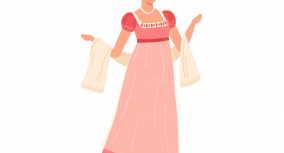A Doll’s House essay questions are a great starting point for anyone wanting to dig into Ibsen’s famous play. Whether you’re tackling a school assignment, preparing for a discussion, or crafting an article, A Doll’s House offers rich material to research, especially around themes of identity, gender roles, personal freedom, and societal expectations.
In this article, Custom-Writing.org experts have gathered:
- Carefully picked questions for a thorough study
- Creative A Doll’s House essay topics
- Prompts for A Doll’s House themes analysis
- Bonus essay samples for extra inspiration
Keep reading to find the perfect idea for your A Doll’s House essay—and make your writing shine!
🏆 A Doll’s House Essay Questions
- A Doll’s House: what does the play’s title mean?
- What do macaroons symbolize in A Doll’s House?
- Is a Doll’s House a feminist play?
- Why was Ibsen forced to create an alternate ending for A Doll’s House?
- How does Nora Helmer change by the end of the play?
- What is Nora’s secret in A Doll’s House?
- Who is the antagonist in A Doll’s House?
- What genre is A Doll’s House?
- How did Ibsen use dramatic irony in A Doll’s House?
- What is the theme of A Doll’s House?
- Nora and Torvald: what is wrong with their relationship?
- In what ways does Dr. Rank provide a contrast to Torvald?
- What is the most wonderful thing that Nora Helmer talks about in the play’s last scene?
💡 A Doll’s House Essay Topics with Prompts
- Describe your opinion about how realistic the play is. Usually, Ibsen’s play is viewed as realistic. However, there might be some contradictions. For example, all the literary devices the author uses. Metaphors and plenty of symbols don’t precisely align with realism in A Doll’s House. Consider both points of view and write an argumentative essay.
- How are gender roles in A Doll’s House represented? One of the central themes in the play is gender roles and feminism. Nora’s behavior is strongly identified with those issues as she tries to find the way out of her dependency. It wasn’t surprising back then for a woman to be an obedient, quiet wife who only takes care of the house and kids. Ibsen opens up this theme through Nora’s conflict.
- Write A Doll’s House character analysis. It is a rather generic theme, so you should think it through and pick one or more characters you wish to analyze. One of the options is to make a comparative analysis of two characters of your choice. If you are not sure where to begin, check out our complete guide to this play!
- Discuss the purpose and effects of dramatic irony in A Doll’s House. Ibsen uses irony in his play a few times. Even though it doesn’t really fit the definition of drama, which is A Doll’s House genre, it adds s excellent impression. Find the most prominent examples of this literary device and try to discuss why the author put it there.
- The theme of marriage and love in the play. It would be an argumentative essay on love in A Doll’s House. Ibsen highlights this theme as one of the most important. You may consider adding a few paragraphs about how characters other than Nora perceive love and the institution of marriage.
- What are the most prominent symbols in the play? Every literary piece has at least one symbol presented in it. Ibsen’s play is not an exception. The symbolism in A Doll’s House is tightly related to the central themes such as freedom and gender roles. Moreover, you should discuss their roles in the play and relevance back then.
- Mrs. Linde’s influence on Nora’s personal development. It seems like everything starts escalating with Mrs. Linde’s arrival in A Doll’s House. However, you would need to consider some indirect influence of that event. It appears that their first conversation might have brought some insights for Nora and promoted her transformation as well as self-realization.
- Compare and contrast A Doll’s House characters: Nora and Krogstad. This A Doll’s House essay should be focused mainly on the similarities between these two characters. They have both committed a crime to save their loved ones. Therefore, you need to consider how Nora and Krogstad feel about social rules and why they were so desperate.
- The theme of freedom in Ibsen’s A Doll’s House. Look into how the play’s characters use the word “freedom.” In this writing, you should focus on the differences between perspectives introduced by various characters. Moreover, it might be a good idea to mention the causes of such mindsets. For example, society at the time was quite influential.
- Discuss Torvald’s point of view on his life. As the play progresses, the audience might notice that Torvald’s perspective is somehow too idealistic. Even though A Doll’s House is supposed to be realistic, this character prefers imaginary life to the real world. Here, you need to find the moments when such Torvald’s traits are the most obvious and analyze them.
- When Mrs. Linde calls Nora a “child,” how does it reflect the truth? In one of the scenes, Mrs. Linde comments on Nora’s irresponsible and inappropriate behavior by calling her a “child.” However, no one truly knows Nora’s natural character and struggles. How fair is it to make such judgments?
- Look into an inheritance in Ibsen’s A Doll’s House. How does the author describe the traits that characters inherit from their relatives? For example, Dr. Rank blames his father for having a disease that slowly kills him. Meanwhile, Nora’s relationship with her father was complicated to the point that even Torvald comments on it.
- What is the meaning behind the title of Ibsen’s play? A Doll’s House might as well hide a metaphor behind its title. Torvald often calls his wife his “doll.” How does it reflect their relationship? What is the correlation of the title to the central theme of gender roles? Nora doesn’t seem to feel free in her house and is getting more and more tired of those plays.
- How feminist is A Doll’s House? Ibsen highlights gender roles’ theme in the play and reflects on the state of this issue back then. Even though the rise of feminism would happen years after its publication, the author had already introduced a character representing the movement. Discuss Nora’s liberation from her husband in this essay.
- Analyze the progression of Nora’s character in the play. Nora is not the only dynamic character in A Doll’s House. However, she is one who undergoes the most change. She goes from pretending to be an obedient and happy housewife to a woman who is ready to leave her family to seek independence and her true self.
- Write about the theme is self-sacrifice in Ibsen’s play. The central themes of A Doll’s House are gender roles, freedom, and marriage. However, there are some less popularly analyzed issues that Ibsen highlights. For instance, self-sacrifice appears to be a shared aspect amongst some characters. All female characters have experienced it, and some men in the play have gone through it as well.
📝 A Doll’s House Essay Examples
- Thorvald and Nora in A Doll’s House: Character Analysis
- Theme and Conflict in “A Doll’s House” by Henrik Ibsen
- The Role of Women in A Doll’s House
- Historical Context of A Doll’s House
- Characters in A Doll’s House: Analysis
- Ibsen’s A Doll’s House: Critical Analysis
- Symbolism in A Doll’s House
- Nora in A Doll’s House: Character Analysis
- Setting in A Doll’s House by Henrik Ibsen
- The Role of Women in A Doll’s House by Henrik Ibsen
- “Ghosts” vs. “A Doll’s House” by Henrik Ibsen
- Nora in “The Doll’s House” by Henrik Ibsen
Thank you for reading this article! If you haven’t found the perfect title idea, try our topic-generating tool. Any questions left? Check the QA section!
